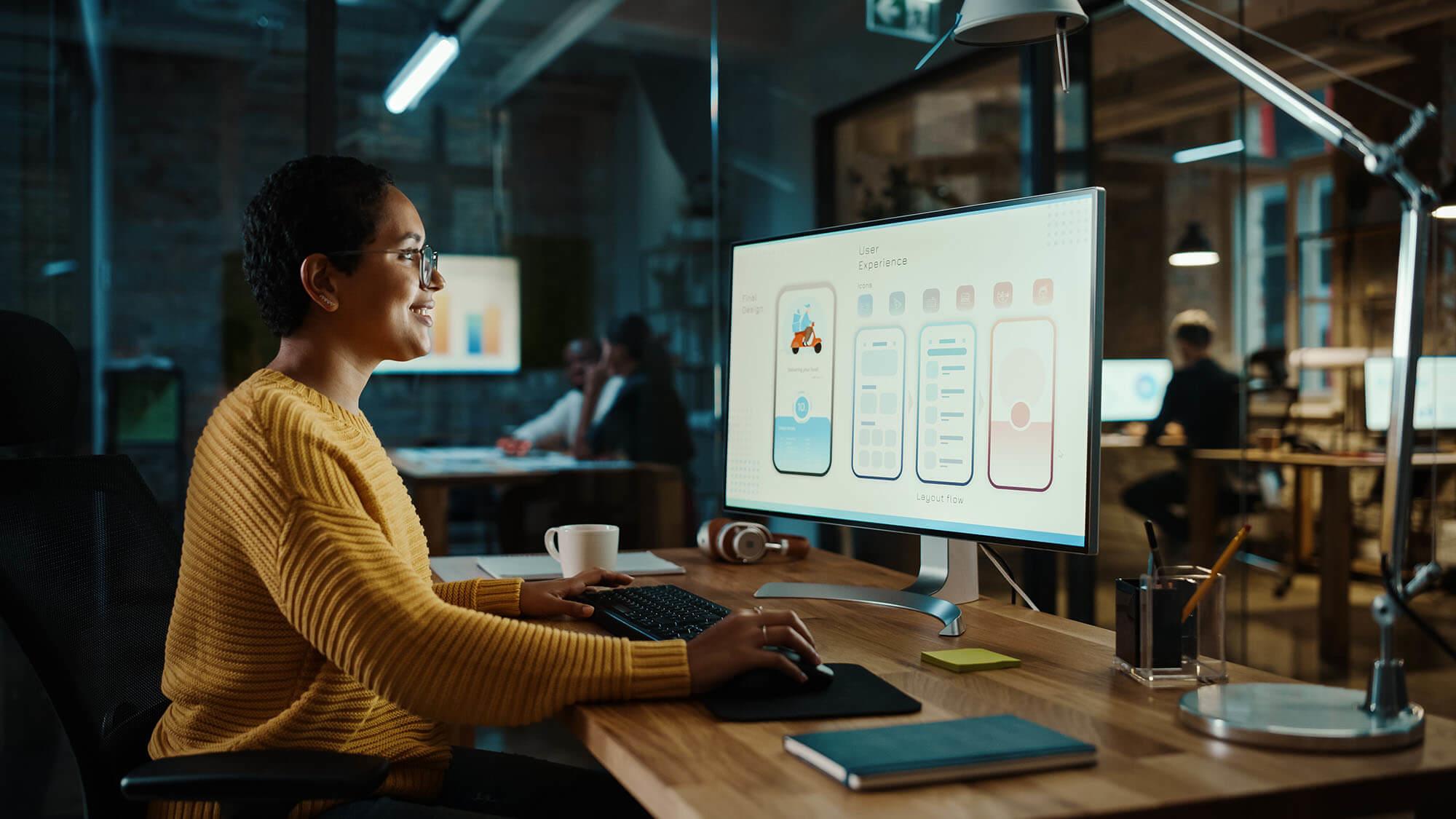Creative Website Design Solutions for Modern and Engaging Sites
In the realm of web design, the quest of modern-day and interesting options has actually ended up being significantly crucial for organizations aiming to catch user interest. By integrating vibrant color plans, interactive aspects, and responsive layouts, developers can develop experiences that not just resonate with individuals but likewise improve brand name identity.
Welcoming Bold Color Design
In website design, the critical use strong color pattern can substantially boost individual involvement and brand name identification. By employing vibrant hues, developers can create visually striking websites that catch attention and foster a memorable experience. An appropriate color combination not only reflects a business's worths but also stimulates details emotions that can affect individual habits.
Vibrant shades can be utilized to assist customers' attention to vital elements such as contact us to activity, boosting conversion prices. For example, utilizing contrasting shades for switches and links can make these components attract attention, triggering individuals to connect even more conveniently. A cohesive color plan across the web site strengthens brand name acknowledgment, developing a sense of knowledge and count on amongst site visitors.
Nonetheless, it is important to balance bold colors with appropriate white room to prevent frustrating users. Reliable use typography also matches bold shades, guaranteeing readability while preserving visual allure. Ultimately, accepting bold color design in web style not only boosts visual top quality however also plays an integral duty in attaining strategic company objectives, making it a necessary consideration for modern web advancement.

Using Interactive Components
Interactive elements are essential in modern internet style, as they dramatically improve individual involvement and develop an extra vibrant searching experience. By incorporating features such as animations, float impacts, and clickable aspects, internet sites can urge individuals to discover content extra thoroughly and return for future gos to.

Micro-interactions, such as refined computer animations when a switch is clicked or a type is sent, can also enhance the customer experience by providing immediate feedback. These tiny information can make the site really feel even more responsive and alive, fostering a feeling of link between users and the website.
Moreover, gamification aspects, such as benefits for finishing particular activities, can inspire individuals to engage with the web content extra deeply. By thoughtfully integrating these interactive parts, web developers can produce a remarkable and appealing on the internet experience that reverberates with individuals and encourages them to return.
Carrying Out Responsive Style
Implementing receptive style is critical in today's multi-device landscape, making sure that web sites give an optimum watching experience across numerous screen sizes. As individuals significantly access the web through mobile phones, tablet computers, and desktops, a one-size-fits-all approach is no longer viable. Responsive style allows for smooth navigation and communication, adapting layout and material to fit the gadget being made use of.
Trick concepts of responsive design include liquid grids, flexible images, and media queries. Fluid grids utilize relative devices, look at here now such as percentages, instead of dealt with pixels, enabling elements to resize proportionately. Flexible images scale within their having aspects, protecting against overflow and preserving aesthetic honesty. Media questions assist in the application of different designs based on the device's qualities, such as width, height, or resolution, permitting developers to tailor the user experience successfully.
Moreover, responsive design boosts search engine optimization performance, as search engines prefer mobile-friendly websites. By implementing receptive layout, companies not just improve customer satisfaction and involvement but likewise enhance their reach in a competitive digital landscape. As innovation continues to progress, embracing receptive layout has actually ended up being a basic practice for any modern-day and engaging site.
Incorporating Multimedia Material
Multimedia content plays a vital duty in creating interesting and dynamic web experiences that capture individuals' attention and boost understanding. By integrating message, pictures, audio, and video clip, websites can provide a richer narrative that interest numerous learning styles and choices. This assimilation visit homepage not just strengthens user involvement yet likewise aids in communicating complex ideas succinctly.
Incorporating top quality pictures and infographics can damage up textual content, making it much more absorbable. Video clip tutorials and discussions can give thorough insights that static content might not completely interact. Audio components, such as podcasts or history music, can likewise boost the environment of a website, creating an extra immersive experience.
Furthermore, the critical use of multimedia can improve search engine optimization performance, as internet search engine prefer diverse material kinds, raising visibility. It is vital to ensure that multimedia components do not hinder page lots times, as this can lead to individual aggravation. By balancing multimedia integration with efficiency factors to consider, web designers can create visually attractive and useful websites that reverberate with individuals, fostering a much deeper link and motivating return check outs.
Prioritizing Customer Experience

To achieve an ideal user experience, designers should concentrate on a number of vital principles. First, receptive style is important; internet sites should adapt flawlessly to different devices and display dimensions. This availability ensures that individuals can engage with content no matter their chosen system. Quality in format and pecking order is vital. Clear phone call to action, readable typography, and organized web content guide individuals, minimizing cognitive lots.
Inevitably, prioritizing UX not only elevates customer satisfaction but also drives engagement and conversion rates, making it a critical aspect of modern internet style strategies. By placing individuals at the facility of design initiatives, web sites can develop long lasting, positive perceptions that encourage return gos to.
Verdict
In verdict, modern-day internet design options that stress strong color schemes, interactive aspects, receptive layout, and multimedia material significantly improve individual engagement and satisfaction. las vegas seo. Prioritizing individual experience via clear content layouts and constant responses even more adds to boosted conversion prices.